Key takeaways:
- End-to-end encryption (E2EE) secures messages by allowing only the sender and recipient to access content, protecting privacy in communication.
- Privacy fosters trust in relationships, enabling individuals to express themselves freely without the fear of being overheard.
- Implementing encryption poses challenges, such as integration complexity and user fears about data access, requiring careful consideration of privacy and safety.
- Personal experiences with encryption highlight the need for education and awareness, balancing security with the responsibility of managing risks.
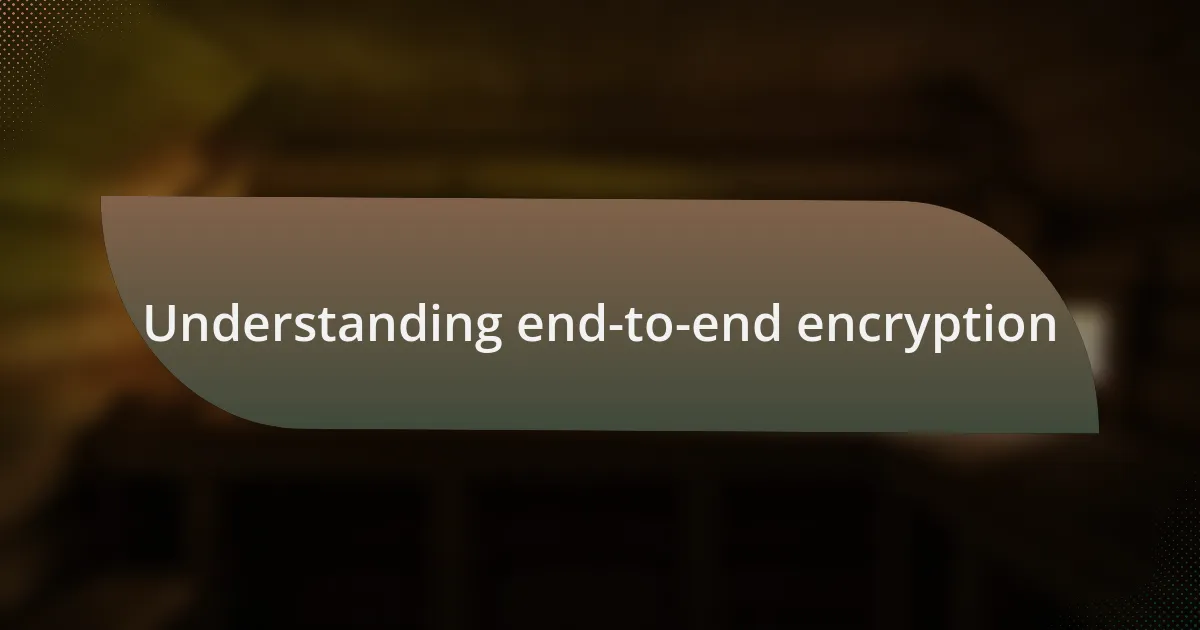
Understanding end-to-end encryption
End-to-end encryption (E2EE) ensures that messages are securely transmitted from the sender to the intended recipient, leaving potential eavesdroppers—including service providers—unable to decipher the content. I remember when I first learned about this technology; it felt like a security blanket for my digital communications. It raised a question for me: how often do we consider who really has access to our private conversations?
In essence, E2EE works by encrypting data on the sender’s device and only allowing decryption on the recipient’s device. I always find it fascinating how something as simple as a chat app can incorporate such complex security measures. It really illustrates how technology can empower us to take control of our privacy.
However, despite its advantages, end-to-end encryption is often misunderstood or viewed skeptically. I used to worry that such technology could potentially enable malicious behavior, giving a license to those with ill intentions. But then I realized that the true value lies in the protection of innocent conversations, allowing individuals to communicate freely, without fear of surveillance. Wouldn’t you agree that this is a fundamental aspect of personal freedom?
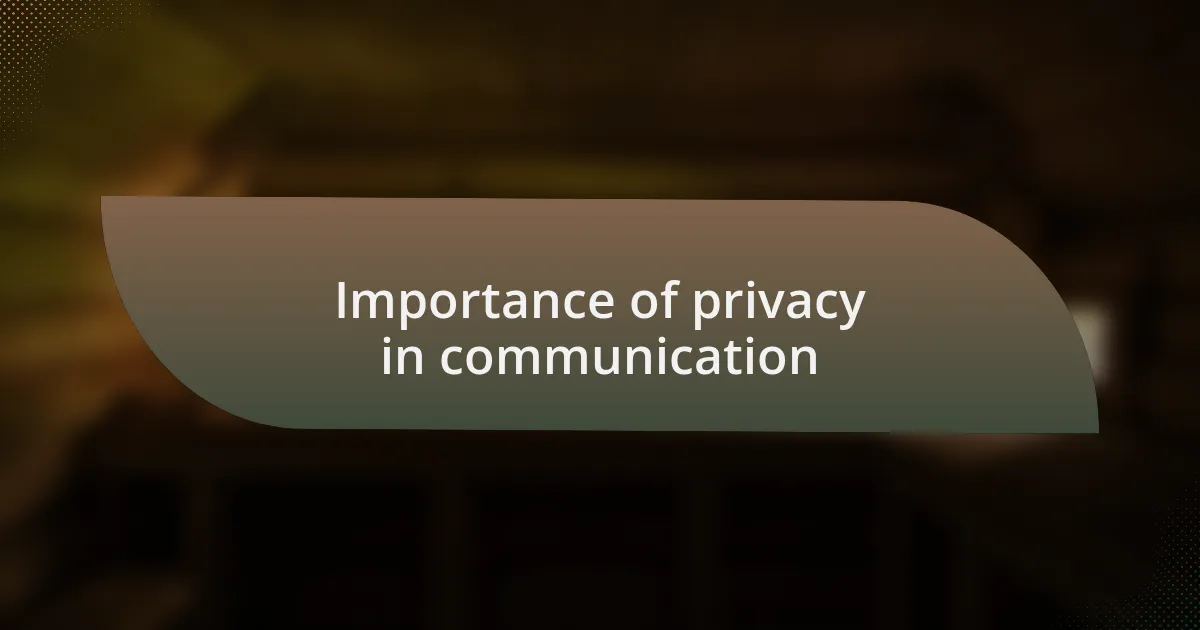
Importance of privacy in communication
When I think about the importance of privacy in communication, I remember a sensitive discussion I had with a close friend. We were sharing personal challenges, and knowing that our conversation was private made it easier to open up. The fear of being overheard can be stifling; it’s amazing how the knowledge of being secure allows us to express our true selves.
Privacy isn’t just about keeping secrets; it’s about fostering trust in our relationships. I’ve often wondered how I would feel if I knew someone was listening in on my conversations. It brings a sense of vulnerability that can hinder honest communication and deepen emotional connections. Protecting our dialogues not only preserves our personal space but strengthens the bonds we share with others.
Moreover, consider the implications of violating privacy in communication. I once came across a story where someone’s intimate messages were leaked, causing public embarrassment and distress. It made me appreciate how foundational privacy is to our peace of mind, empowering us to speak freely without the threat of exposure. Isn’t it crucial that we advocate for a secure environment in which every voice can be heard with confidence?
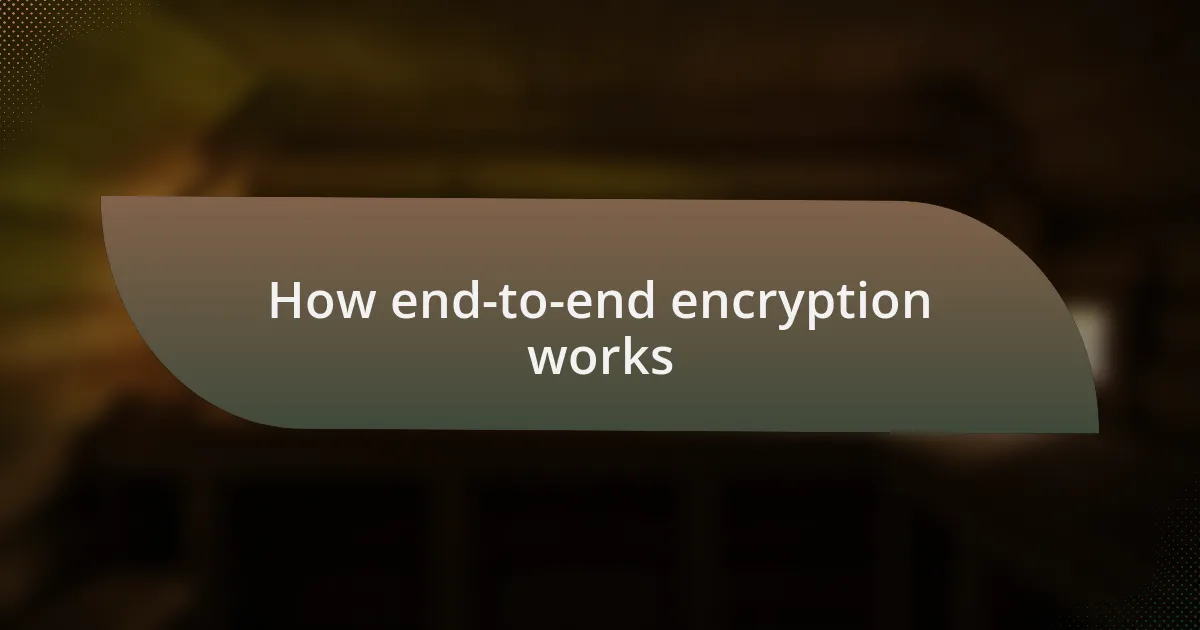
How end-to-end encryption works
When discussing how end-to-end encryption works, it’s fascinating to consider the role of encryption keys. Essentially, these keys are like secret codes that only the sender and receiver possess. I remember a time when I sent an important document to a colleague; knowing that only we could read it provided a reassurance that the information would remain confidential, no matter how many servers passed it along.
The process begins when I write a message. The text gets scrambled (or encrypted) with a unique key before it travels through the Internet. Once it reaches the recipient, their device uses a corresponding key to unlock it. Reflecting on my experiences with secure messaging apps, the knowledge that my conversations are just as coded as a spy movie script brings an element of excitement, as if I’m part of a hidden world.
It’s striking to think about how this layer of protection creates a barrier against unwanted eyes. As someone who values privacy, I often ponder the implications if this process were to be compromised. Would I still feel safe sharing sensitive thoughts? Understanding the mechanics of end-to-end encryption reassures me that our dialogues remain strong and private, bolstering my belief in the need for robust privacy measures in our digital lives.
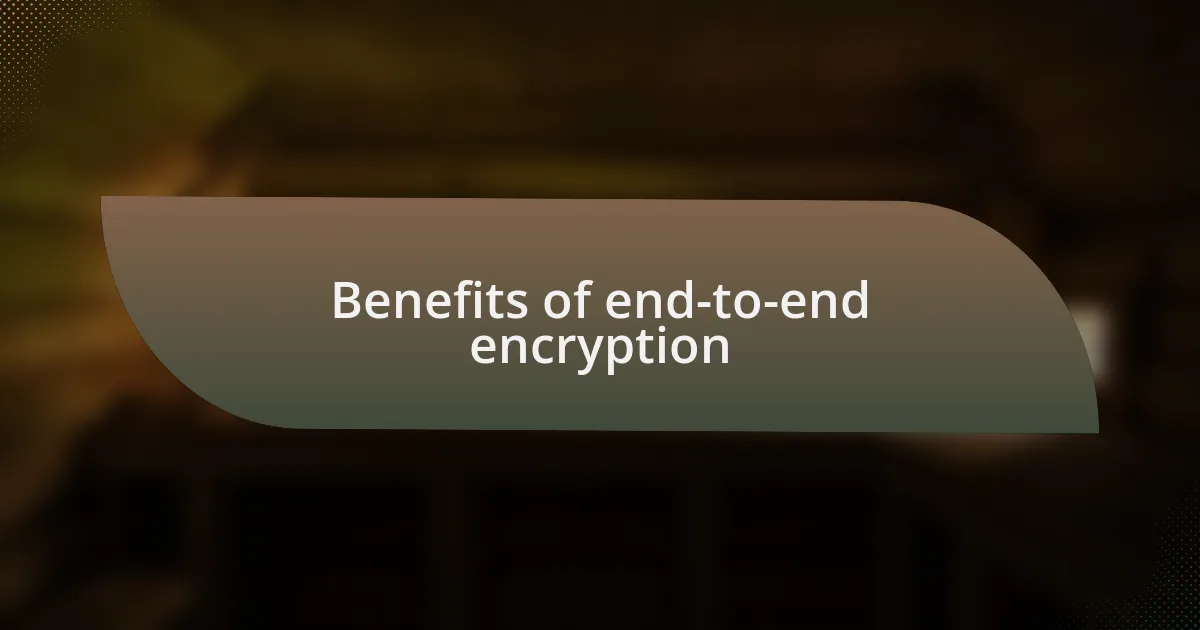
Benefits of end-to-end encryption
The benefits of end-to-end encryption are profound, primarily because it ensures that only the intended recipient can access the information sent. I once shared financial details with my accountant through a secure app, and knowing that our communication was shielded from potential hackers put my mind at ease. In a world rife with data breaches, that peace of mind is something I deeply value.
Another significant advantage is that end-to-end encryption helps prevent unauthorized access, not just from outsiders but also from the service providers themselves. I think back to a conversation I had about a sensitive project—I realized how critical it was that even the platform we used couldn’t glimpse our discussions. This level of protection empowers users by putting them in control of their own data.
Moreover, the very nature of end-to-end encryption builds trust in digital communication. I feel a sense of security when I know that I can share my thoughts freely, whether it’s discussing personal matters or professional insights. Have you ever felt hesitant to speak your mind online? I certainly have, but this technology opens up new avenues for honest dialogue, making it easier to engage in meaningful conversations without the fear of eavesdropping.

Challenges of implementing encryption
Implementing encryption is not without its hurdles, one of the most significant being the complexity of integrating it into existing systems. I remember a time when I was involved in a project that aimed to introduce encryption features to a legacy communication platform; it was daunting. The technical adjustments required often felt overwhelming, and the experience reinforced how critical user-friendliness is in design.
Another challenge is the persistent fear among users about losing access to their data. A friend of mine once shared her concerns about encryption, worried that if she lost her key, her sensitive information would be irretrievably gone. It’s an understandable fear, and it highlights the need for transparent processes that help users manage their own security without compromising on ease of use.
Finally, there’s the tension between encryption and law enforcement. As I reflect on discussions with peers in the tech field, I recall how often emotions ran high over whether encryption should be backdoored for authorities. It leads me to wonder: can we truly balance privacy and safety? For many, the answer is essential, yet it presents a formidable ethical dilemma that we must navigate carefully.
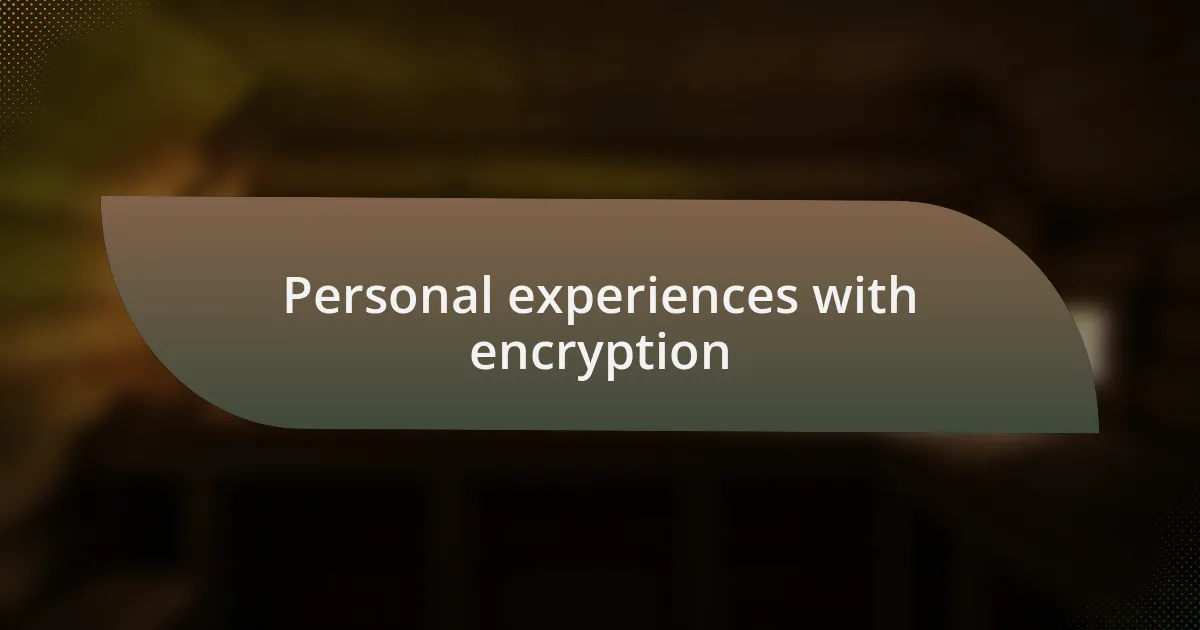
Personal experiences with encryption
When I first embraced encryption in my personal communications, it felt like stepping into a digital fortress. I recall the moment I switched to an encrypted messaging app; it was liberating yet unnerving. Would my friends join me, or would I be the lone sentinel in this new realm of privacy? The initial hesitance from my circle made me realize just how daunting the concept of encryption can seem to the uninitiated.
One particularly memorable experience was when I had to explain encryption to my younger sibling. He struggled to grasp the importance of it, still thinking of online privacy as something abstract. As I laid out the reality of data breaches and surveillance, I could see the lightbulb flicker on. The small victory of helping him understand made me appreciate the need for education about encryption. It’s not just a technical feature; it’s a critical element of self-defense in our digital lives.
Yet, fear often lurks alongside empowerment. A few months ago, I locked my important files using encryption for the first time. The rush of security soon turned to a pang of anxiety. What if I forgot the password? Would I lose everything? This experience taught me that while encryption offers significant protection, it also requires a careful balance of responsibility and awareness of the risks involved. Isn’t it ironic how the very tools that secure us can also become sources of stress?